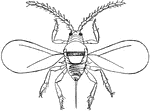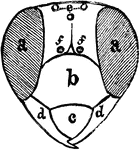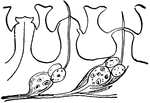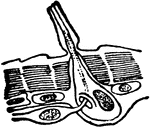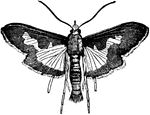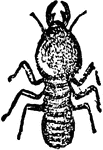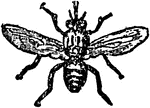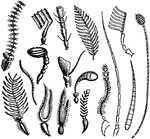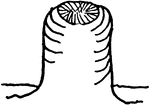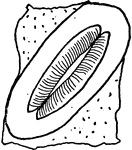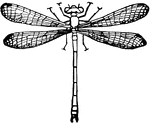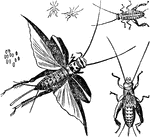
House Cricket
"House Cricket (Gryllus domesticus): a, eggs; b, young just hatched; c, full-grown larva; d, pupa; e,…

Venus Fly-trap
"Leaf of Venus's Fly-trap (Dionaea muscipula), closed over insect, viewed from the side." — The…
Venus Fly-trap
"Leaf of Venus's Fly-trap (Dionaea muscipula), closed over insect, viewed from above." — The Encyclopedia…

Strawberry Weevil
"The strawberry weevil in certain seasons has prevented the development of more than a half crop of…

Praying Mantis
"Probably no other insect has been the subject of so many and widespread legends and superstitions as…

Insect Crust
Section through insect crust, showing layers of chitin at c, the cellular layer or hypodermis…
Sexual Organ of Insects
Ovarian tubes of one side, in Polistes, showing eggs in all stages of development, with nutritive…
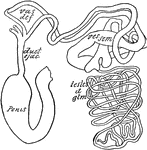
Sexual Organ of Insects
Male organs of May-beetle. One side only beyond the ductus ejaculatoris, duct. ejac.…

Cabbage Butterfly
Pieris Vapae. An insect imported many years ago from Europe, and which has now spread over the largest…

Cabbage Butterfly
Pieris Vapae. An insect imported many years ago from Europe, and which has now spread over the largest…
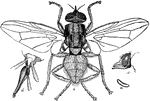
Horn Fly
This insect derives its common name from the fact that it seems to prefer clustering in great numbers…

Planthopper
Otiocerus coquebertii, a small insect of a somewhat elongated form and having a small projection in…

Fulgora
A most singularly-formed insect; the front part of its head being much prolonged, and projecting upward…

Black Leaf-Leg
A small homoterous insect, Phylloscelis Atra (var. pallescens) is not uncommon among…

Wooly Aphid
Eriosoma Lanigera, or the Wooly Apple-Tree Blight. These insects appropriate for their generic name…
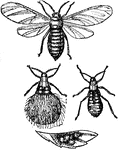
Wooly Aphid
Eriosoma Imbricata. Found very abundantly on birch in Maryland in October. These insects cluster together…
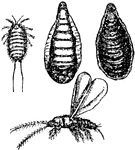
Aspidiotus Citricola
Scale-insect, was found on imported lemons in Jacksonville, Fla. This insect is said to be allied to…

Insect Sifter
The rear end of the machine is mounted upon two wheels. A trough, with a runner-like bow, containing…

Crushing Insect Sifter
The machine is supported upon two wheels, one in the rear of the other. The body is hopper shaped, with…

Apple Plant Louse
The females deposit their eggs, which are small, oval, and black, on twigs and bark in the autumn; the…

Apple Plant Louse
The females deposit their eggs, which are small, oval, and black, on twigs and bark in the autumn; the…

Fitch
A grape-vine leaf gall-louse. The insect forms galls on the under side of the grape-vine leaves, and…
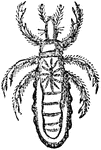
Crab Louse
Pediculus Pubis. The crab-louse is gray-black and is a much broader square form than the other two species…
